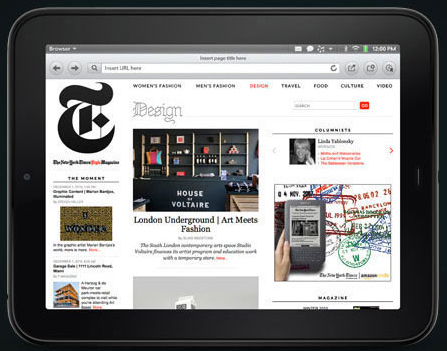HP TouchPad: Last stand for iPad competitors?


I have written in the past that I have seen no proof that a tablet market exists outside of the iPad, and having witnessed the dismal launch of big-name Android tablets nothing has changed my view. Android tablets are not selling well by anyone's standard, and RIM has not set sales records with the BlackBerry PlayBook. Apple keeps selling millions of iPads, and a big bank of competitors keeps releasing tablets that few are buying.
With no market clearly defined for tablets other than the iPad, HP is about to enter the fray with its first webOS tablet. The TouchPad may be the last stand of iPad competitors in the attempt to garner significant market share from Apple. The good news for HP is the TouchPad is different enough from the pack to have a shot at carving that share.
Size. It is no coincidence that HP is producing the TouchPad with the same size as the iPad. Android tablet makers have chosen different sizes for their offerings, but HP is reproducing the 9.7-inch display running at 1024x768 of the iPad. It doesn't sound like a big difference compared to the many Android tablets with 10.1-inch displays, but it really is. Those larger tablets are using a wide-screen format that Apple has passed on and HP is wise to do the same. This allows the TouchPad to have a similar footprint of the iPad, which has proven popular with consumers. It is also better for using the tablet in portrait orientation, as the wide-screen format is too narrow.
Polish. The appeal of the iPad is how polished the tablet experience is for the user, something Honeycomb tablets are sadly lacking. The TouchPad uses HP's webOS which has the most polished user interface on any tablet. The demonstrations I have seen of the TouchPad in action show a simple interface that is extremely attractive and polished in appearance. It is the first tablet interface that looks better than the iPad's, and has better features presented in an intuitive package.
Distribution channels. HP is the first company producing a tablet to compete with the iPad that has the global channels already in place to give the TouchPad a massive retail presence at launch. The company also has tremendous production capacity to flood those channels with product, so all of the pieces are in place. All HP must do to capitalize on this is market the heck out of the TouchPad at launch. The HP name is already famous in both the household and the enterprise, so with proper marketing the TouchPad has a serious shot at grabbing good sales numbers.
The launch of the TouchPad into the tablet market is a big gamble for HP. There is no proof a non-iPad tablet market even exists, but HP has all of the right things in place to give it a serious shot. This will be interesting to watch unfold as the TouchPad hits the market, and we see what the consumer reaction is to a non-iPad.
See related coverage: